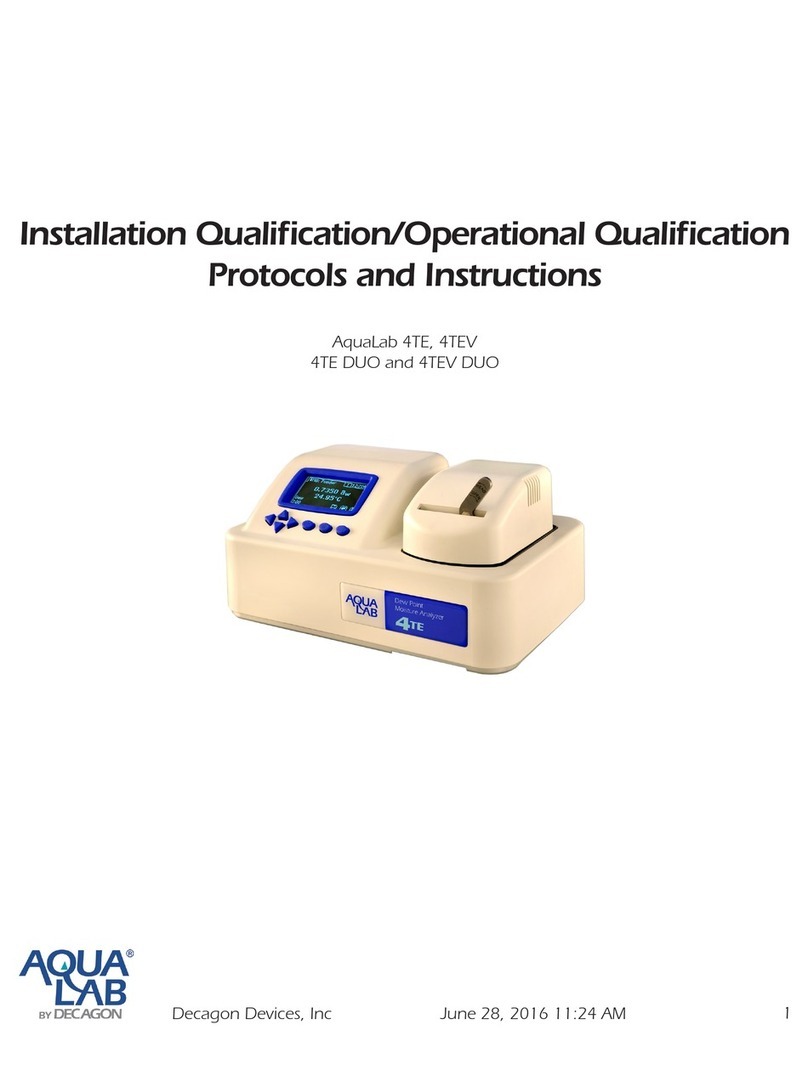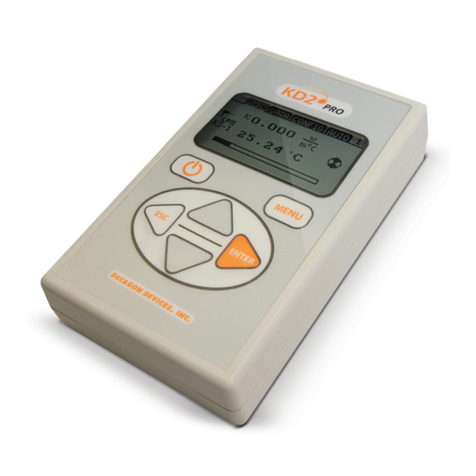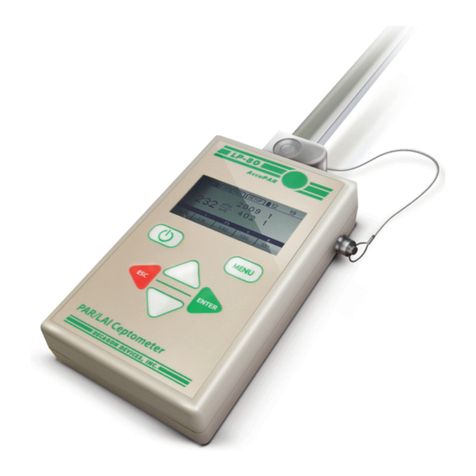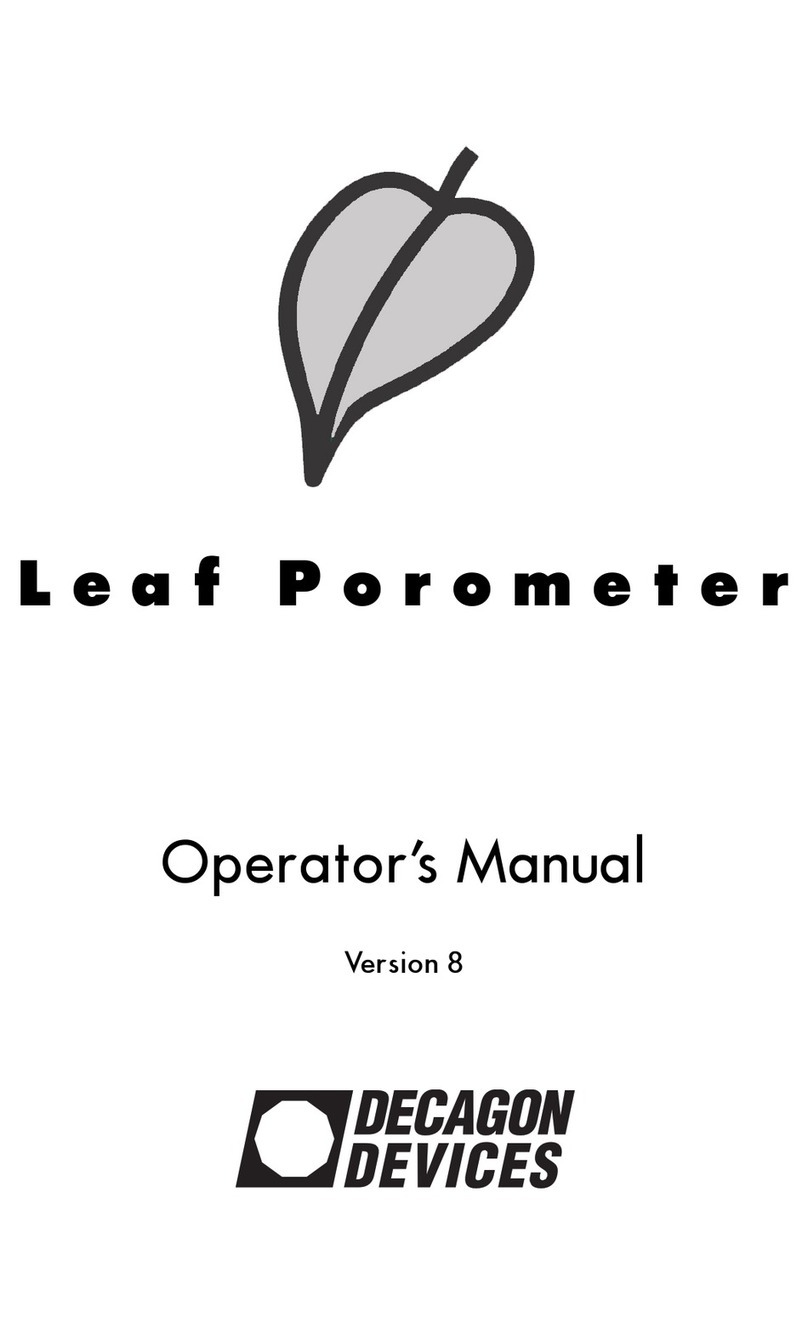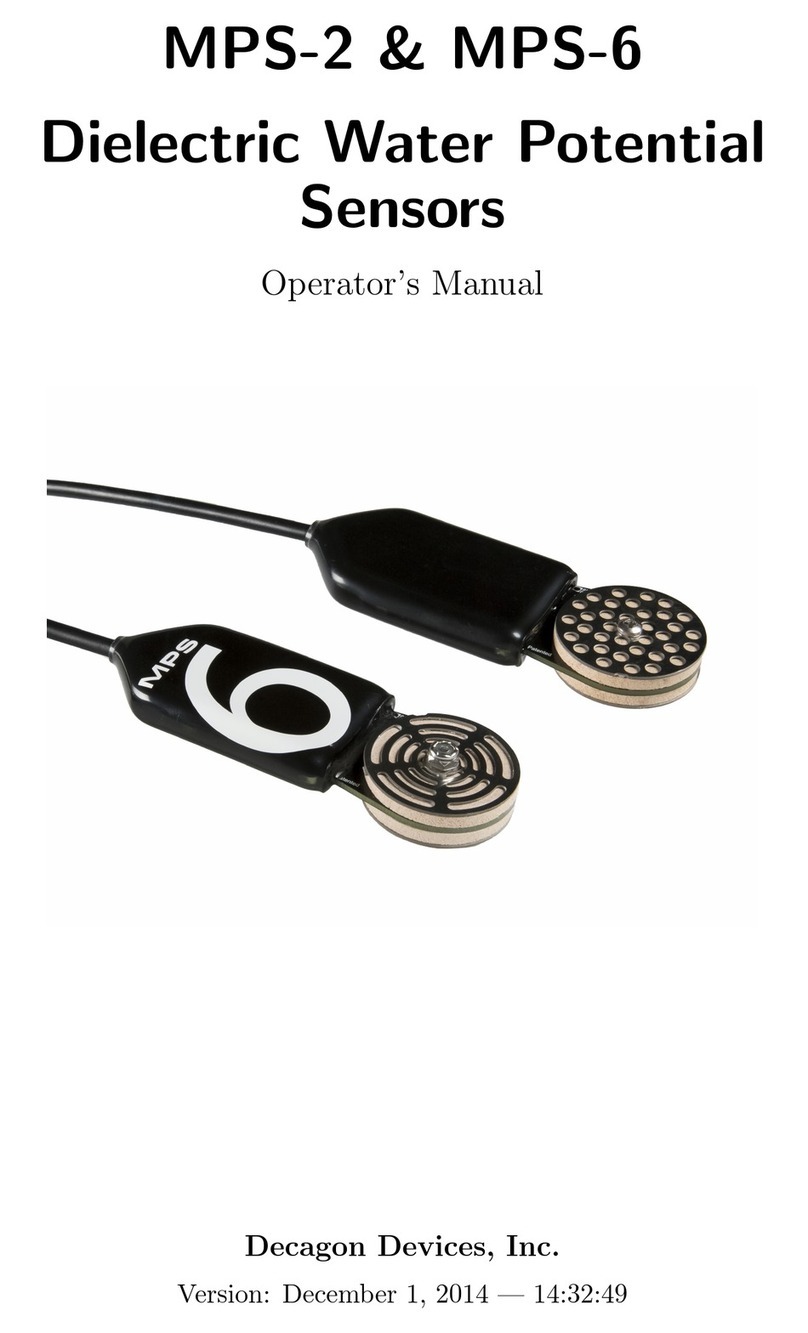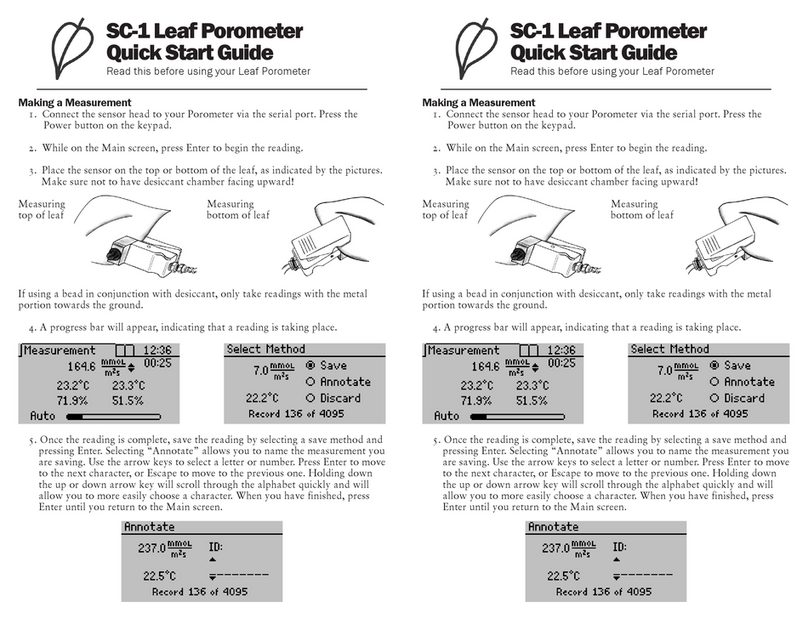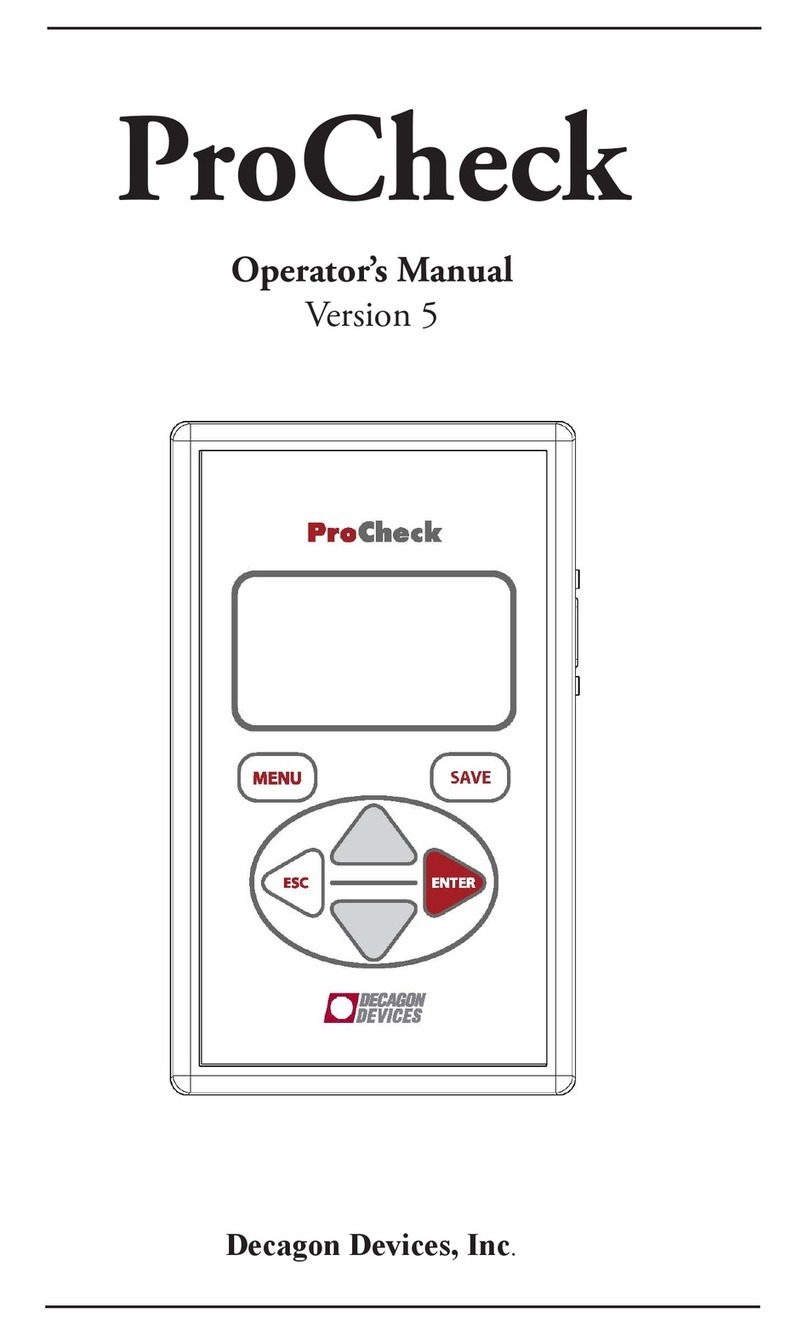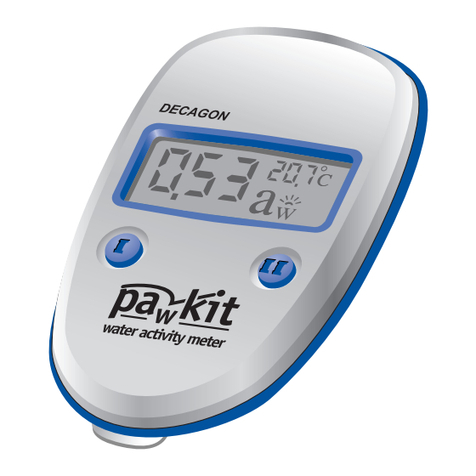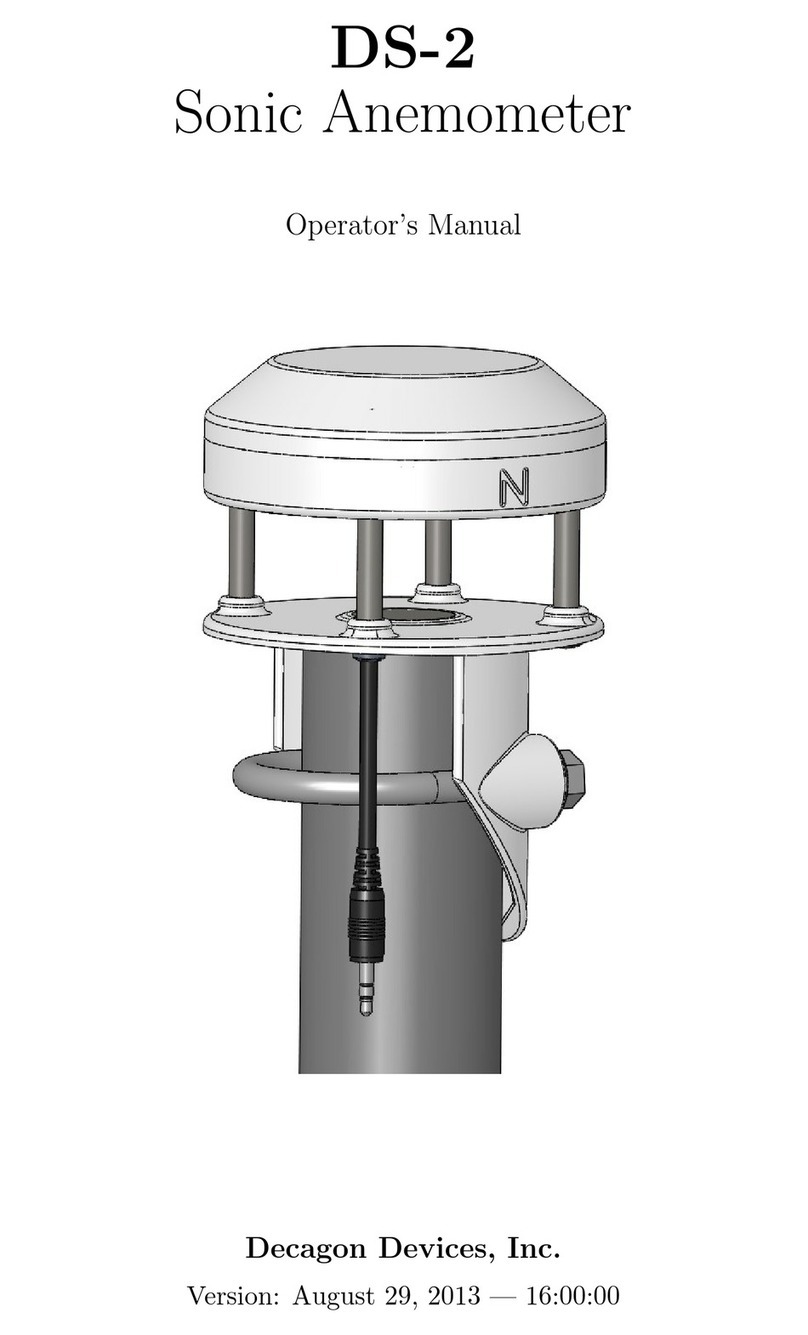
2
KD2 Pro Operator’s Manual
1. Introduction
If contacting us by email or fax, please include as part of your
message your instrument’s serial number, your name, address,
phone, and fax number.
NOTE: If you purchased your KD2 Pro through a distribu-
tor, please contact them for assistance.
Warranty Information
The KD2 Pro has a 30-day satisfaction guarantee and a one-
year warranty.
Seller’s Liability
Seller warrants new equipment of its own manufacture against
defective workmanship and materials for a period of one year
from date of receipt of equipment (the results of ordinary wear
and tear, neglect, misuse, accident and excessive deterioration
due to corrosion from any cause are not to be considered a
defect); but Seller’s liability for defective parts shall in no event
exceed the furnishing of replacement parts F.O.B. the factory
where originally manufactured. Material and equipment cov-
ered hereby which is not manufactured by Seller shall be cov-
ered only by the warranty of its manufacturer. Seller shall not be
liable to Buyer for loss, damage or injuries to persons (including
death), or to property or things of whatsoever kind (including,
but not without limitation, loss of anticipated profits), occa-
sioned by or arising out of the installation, operation, use, mis-
use, non-use, repair, or replacement of said material and
equipment, or out of the use of any method or process for
which the same may be employed. The use of this equipment
constitutes Buyer’s acceptance of the terms set forth in this
warranty. There are no understandings, representations, or war-
ranties of any kind, express, implied, statutory or otherwise
(including, but without limitation, the implied warranties of
